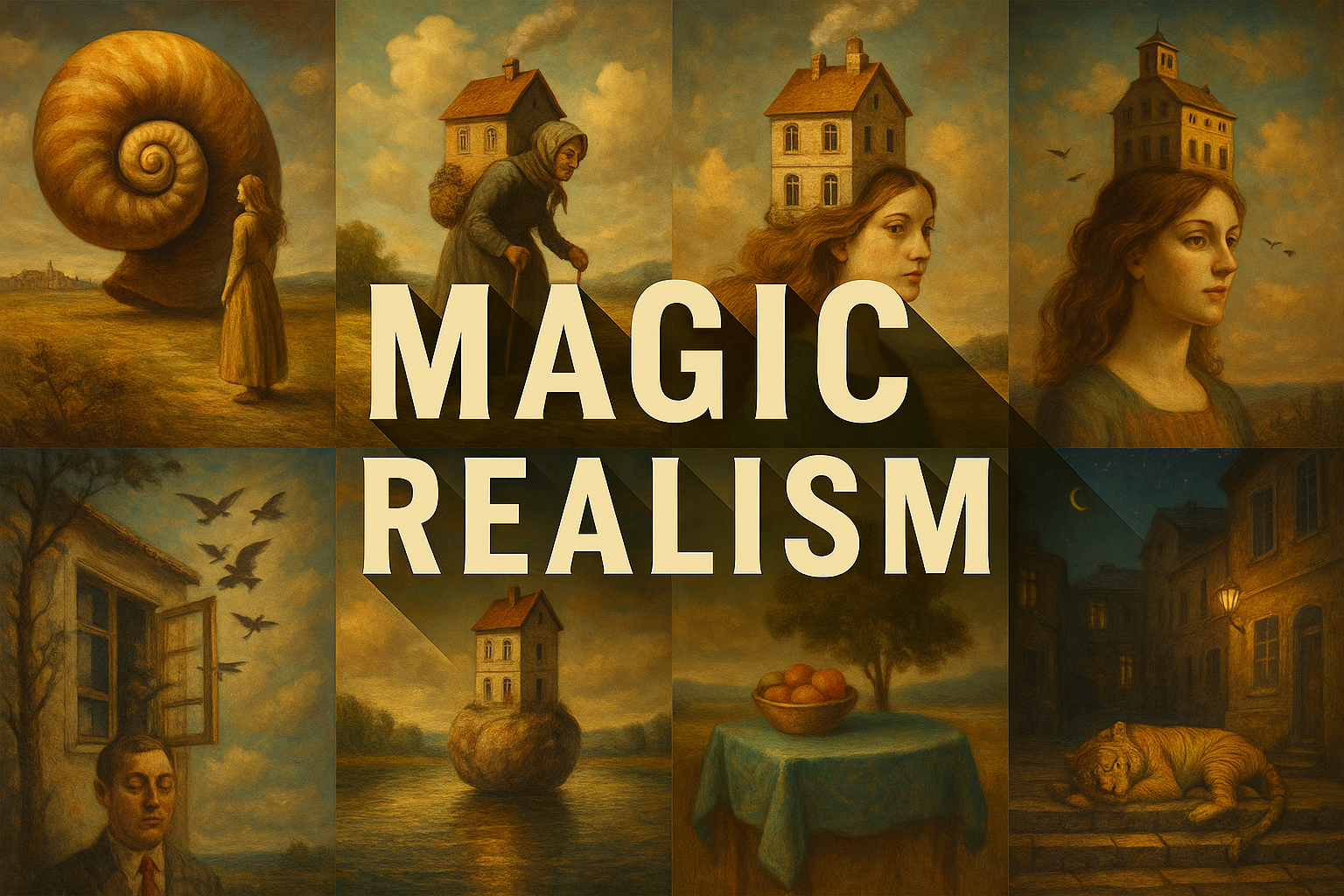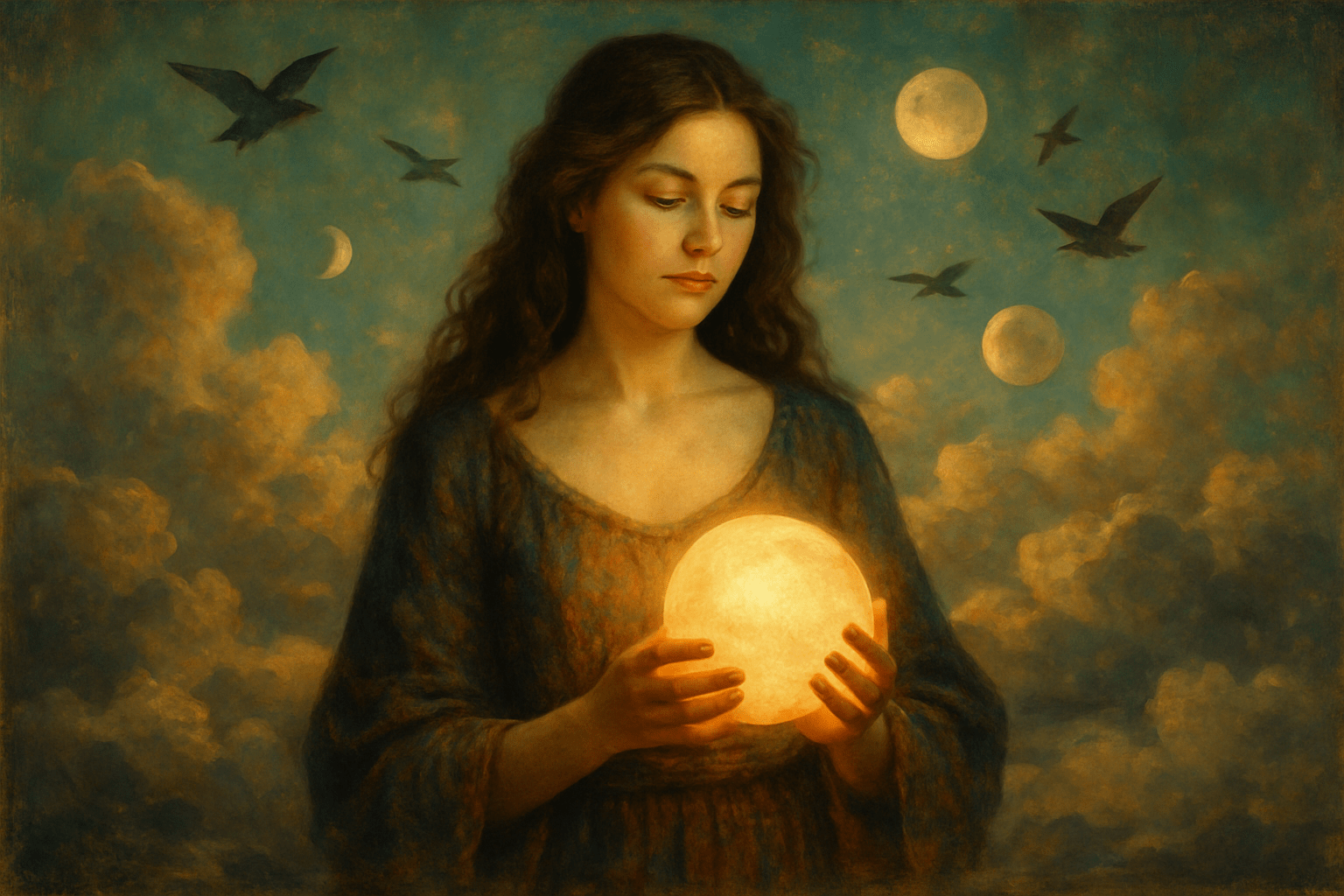
Magic Realism
The art style of Magic Realism is often described as having a dreamlike quality, with elements of both reality and fantasy. This style is often characterized by its use of bright colors and bold patterns, as well as its focus on the everyday lives of ordinary people.
AOI thinking about Magic Realism [+_~]-/
Overview and Quickfacts
Magic Realism is a genre of art that combines elements of both fantasy and reality. It is often used to create a sense of wonder or mystery, and often features magical or supernatural elements.
Can understand it also, as:
Fantasy, supernatural, myth, legend, fairy tale, enchantment, witchcraft, sorcery, alchemy.
Categorize it as:
Impressionism, Modernism
.: Dreaming :.
holds a HAIKU for the art style
:. Thought is power .:
Detailed Description
What is Magic Realism? Magic realism is an art style that combines elements of both fantasy and reality. It is often used to describe works of art, literature, and film that blur the lines between the two genres. Famous magic realism artists include Salvador Dali, RenÃÂé Magritte, and Max Ernst. Some of the most famous magic realism paintings are Dali’s “The Persistence of Memory” and Magritte’s “The Treachery of Images.” Magic realism often uses surrealist techniques to create an atmosphere of dreamlike strangeness. This can be seen in Dali’s painting, which features melting clocks, and in Magritte’s painting, which features a pipe that is also a sentence. Magic realism can be used to comment on social or political issues. Ernst’s “Europe after the Rain” is a painting that was created in the aftermath of World War II and comments on the destruction and devastation that was left in its wake. Magic realism is a style that continues to be popular with artists, writers, and filmmakers today. It is a way to create art that is both beautiful and thought-provoking.
.. beep, beep, beep ..
<START OF TRANSMISSION>
1. Magic realism is a genre of fiction that combines elements of the fantastic or supernatural with realistic fiction. 2. Magic realism is often used to explore social and political issues. 3. Magic realism is often seen as a reaction to the disconnection between the modern world and traditional belief systems. 4. Magic realism is often used to highlight the absurdity of the modern world. 5. Magic realism often has a strong sense of place. 6. Magic realism often uses magical or supernatural elements to explain real-world phenomena. 7. Magic realism often features characters with extraordinary abilities or powers. 8. Magic realism often uses elements of the fantastic to challenge traditional ideas about reality. 9. Magic realism often uses humor and irony to deflate the pretensions of the modern world. 10. Magic realism is often seen as a reaction against the disconnection between the modern world and traditional belief systems. 11. Magic realism is often used to highlight the absurdity of the modern world. 12. Magic realism often has a strong sense of place. 13. Magic realism often uses magical or supernatural elements to explain real-world phenomena. 14. Magic realism often features characters with extraordinary abilities or powers. 15. Magic realism often uses elements of the fantastic to challenge traditional ideas about reality. 16. Magic realism often uses humor and irony to deflate the pretensions of the modern world. 17. Magic realism is often associated with Latin American literature. 18. Magic realism is often seen as a reaction to the disconnection between the modern world and traditional belief systems. 19. Magic realism is often used to highlight the absurdity of the modern world. 20. Magic realism often has a strong sense of place.
<EOF>
.. robbel bob
Visual Examples from our image gallery
Coming soon, we are so slow .. might never come
Artists, Paintings, and more
(be aware, can be highly speculative)
Artists (be aware, speculation possible):
X
Artworks (be aware, speculation possible)
1. The Persistence of Memory, Salvador Dali (1931) 2. The Treachery of Images, RenÃÂé Magritte (1928-9) 3. The Red Horseman, Frida Kahlo (1954) 4. The Dream, Remedios Varo (1957) 5. The Supper at Emmaus, Caravaggio (1601) 6. The Hay Wagon, Andrew Wyeth (1948) 7. The Madonna of the Pomegranate, Sandro Botticelli (1487) 8. The Arnolfini Portrait, Jan van Eyck (1434) 9. The Hunters in the Snow, Pieter Bruegel the Elder (1565) 10. The Garden of Earthly Delights, Hieronymus Bosch (1490-5) 11. The Nightmare, Henry Fuseli (1781) 12. The Tempest, Giorgione (1508) 13. The Annunciation, Leonardo da Vinci (1472-5) 14. The Creation of Adam, Michelangelo (1512) 15. The Battle of San Romano, Paolo Uccello (1438-40) 16. The Ambassadors, Hans Holbein the Younger (1533) 17. The Hay Wain, John Constable (1821) 18. The Raft of the Medusa, ThÃÂéodore GÃÂéricault (1819) 19. The Death of Marat, Jacques-Louis David (1793) 20. The Third of May 1808, Francisco Goya (1814) 21. The Death of Socrates, Jacques-Louis David (1787) 22. The Death of Nelson, Benjamin West (1806) 23. The Anatomy Lesson of Dr. Nicolaes Tulp, Rembrandt (1632) 24. The Last Supper, Leonardo da Vinci (1495-8) 25. The Hay Wain, John Constable (1821) 26. The Raft of the Medusa, ThÃÂéodore GÃÂéricault (1819) 27. The Death of Marat, Jacques-Louis David (1793) 28. The Third of May 1808, Francisco Goya (1814) 29. The Death of Socrates, Jacques-Louis David (1787) 30. The Death of Nelson, Benjamin West (1806)
Epoch
X
AI ART RESSOURCES (AKA, well Tools)
Helping tools -> predefined search links on other pages:











